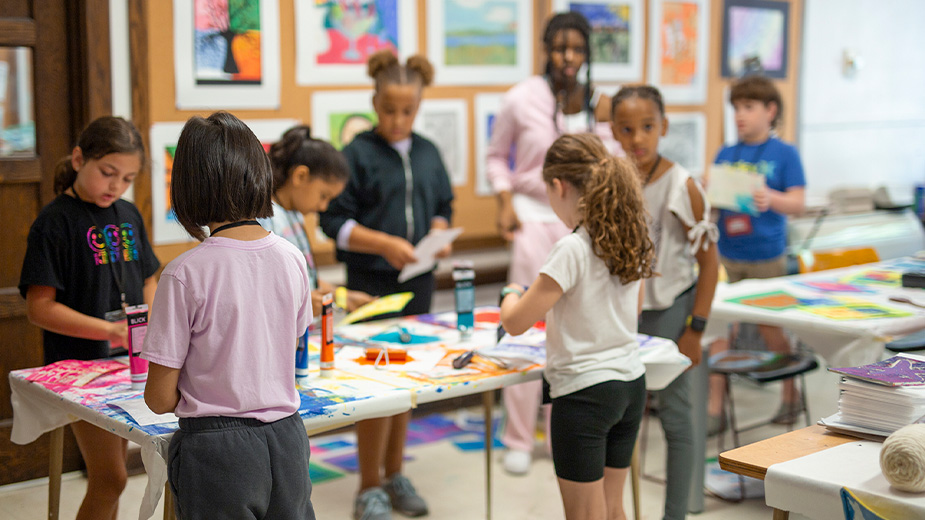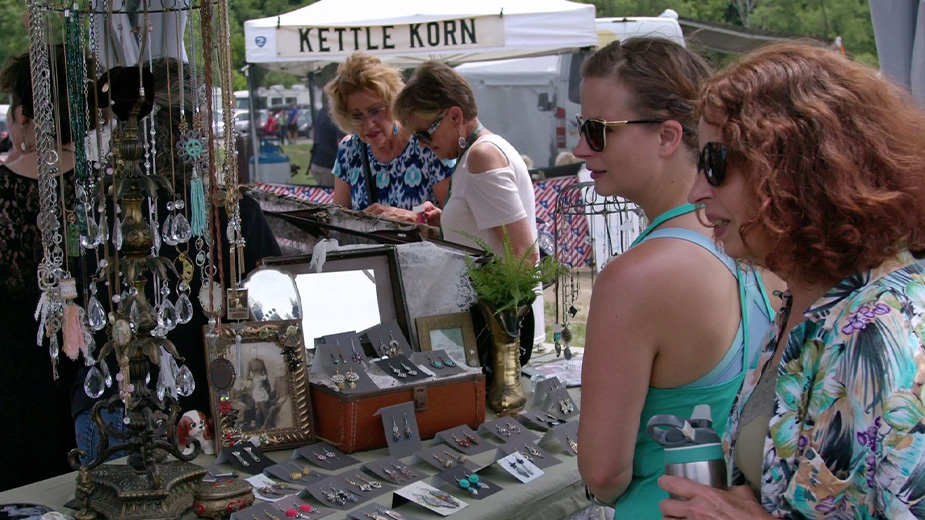Exhibit Explores Partnership of Shenango China, Art Museum
NEW CASTLE, Pa. – “Museum to Table,” an historical photo exhibition, will open Tuesday, Aug. 1, at The Confluence restaurant and coffee shop, 214 E. Washington St., downtown, and run through Sept. 21.
The exhibition, presented by The Hoyt arts center, explores the partnership of New Castle-based Castleton China with the Museum of Modern Art in New York to create the first modern china in the United States. The collection debuted at the MoMa in 1946 before traveling to several high-profile showrooms across the country as documented in the displayed photographs. Castleton China was a subsidiary of Shenango China of New Castle.
However, it is the stories behind these photos that hold the most intrigue – from the creation of the collection with up-an-coming designer Eva Zeisel to the influence and opportunities brought to Shenango China of New Castle by the impending war in Europe.
Up until 1935, Shenango China produced primarily commercial china for hotels, restaurants, railroads and the like at its massive New Castle pottery. Founder James Smith began experimenting with porcelain in 1928 but abandoned those efforts during the Great Depression.
The Theodore Haviland Company of France, renown for Limoges porcelain, changed that in 1936. As political tensions rose in Europe with the threat of Nazi invasion, Haviland sought an American partner to produce Haviland China in the United States. Shenango China was awarded the contract and began making Haviland porcelain using Haviland’s formula, blocks cases and decals under the trademark “Theodore Haviland New York made in America.” They continued to do so until 1958.
Now equipped with sufficient experience in porcelain, Smith co-founded Castleton China, a division of Shenango China, in 1940 with Louis Hellman. Their singular goal was to create the first and finest American china in the country to compete with European imports. Louis Hellman was a former executive with Germany’s famed Rosenthal China, whose reputation for producing fine porcelain was synonymous with objects of art. Yet with the rise of German nationalism in the 1930s, not even the company’s international reputation could overcome its Jewish roots. The Rosenthal family was exiled by Adolph Hitler’s regime, and nearly 5,000 skilled employees, including Hellman, were displaced.
Having spent a lifetime in fine china manufacturing, Hellman proved to be a valuable asset to the fledgling company. Inspired by visiting the MoMa’s exhibit, “Organic Design in Home Furnishings”, Hellman approached Elliot Noyes, then director of the museum’s Department of Industrial Design, for a designer capable of imagining a modern dinnerware service that was worthy of an exhibition at the MoMa.
Noyes recommended Eva Zeisel, who was commissioned in January 1942.
Born into a wealthy Jewish family in Hungary in 1906, Zeisel also came to America to escape Nazi persecution in 1937. She began the “Museum” line commission by studying Emily Post’s rules of etiquette to better understand the American ideal of elegance at the formal dinner table.
A service of 12 retailed for $300 in 1946, the equivalent of $4,680 today.
The family of 25 shapes, titled “New Shapes in Modern China Designed by Eva Zeisel,” was completed in 1943 but not unveiled until the 1946 exhibition at the MoMa due to the war.
Zeisel is regarded as one of the most important industrial designers of the 20th century and is collected by major museums across the globe.
After undergoing several changes of ownership, the Shenango China pottery plant in New Castle permanently closed in 1991.
The collection of photographs on display largely belongs to the Lawrence County Historical Society, which boasts the largest collection of Shenango China in the world. Advertisements and decals are courtesy of the Hoyt’s permanent collection. Examples of the “Museum” line can be seen at the Hoyt during normal business hours: 11 a.m. to 8 p.m. Tuesday-Thursday, and 11 a.m. to 4 p.m. Friday and Saturday.
Pictured at top: A photo from the “Museum to Table” exhibition at The Confluence in downtown New Castle, Pa. (Photo by Carl Ullrich Inc.)
Published by The Business Journal, Youngstown, Ohio.



